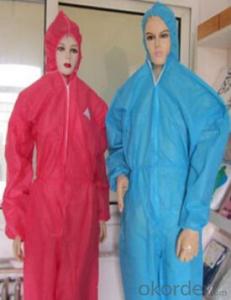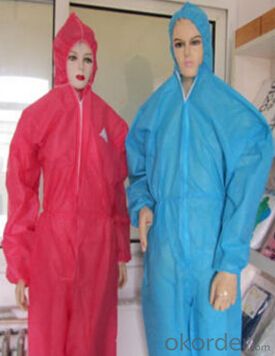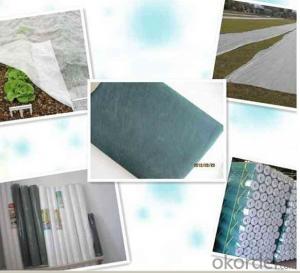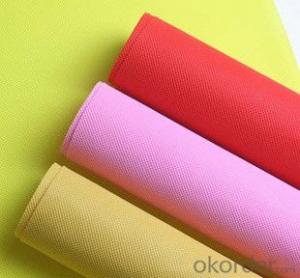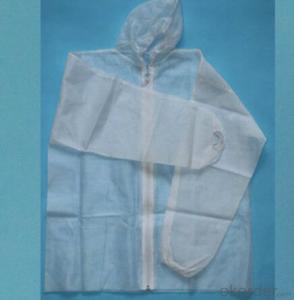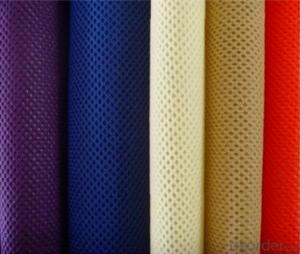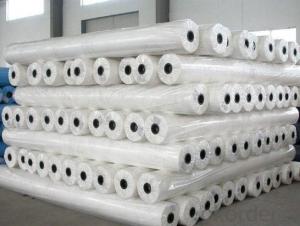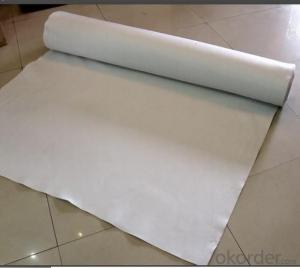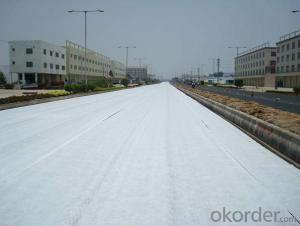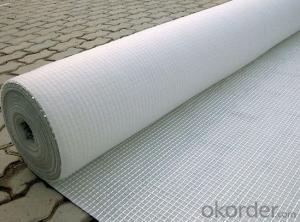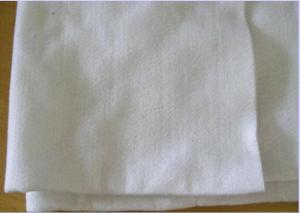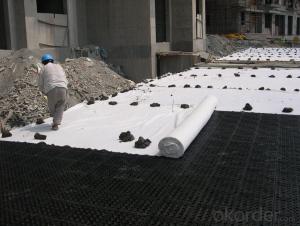Bidim Colorful PP Spunbonded Nonwoven Fabric Cloth Géotextile
- Loading Port:
- China Main Port
- Payment Terms:
- TT OR LC
- Min Order Qty:
- -
- Supply Capability:
- -
OKorder Service Pledge
OKorder Financial Service
You Might Also Like
Introduction of polypropylene spunbond non woven fleece fabric for cloth
is used to protect the t can protect the doctors or workers safely and protect them from desease.
Specification of PP Spunbond Non Woven Fabric:
100% Polypropylene/100% PP
Color:Any color can be available
GSM(gram per square meter): 9-180GSM
Roll Width 4-320cm
Roll Length According to your requirement
Technics Nonwoven Spunbonded
Feature Waterproof, Mothproof, Eco-friendly, Non-toxic, Breathable, Anti-Bacteria
Packing of Polypropylene Spunbond Non Woven Fabric:
Each roll is wrapped in a plastic bag with label specification with paper tube inside .
Feature Waterproof, Mothproof, Eco-friendly, Non-toxic, Breathable, Anti-Bacteria
- Q: What are the applications of geotextiles in civil engineering?
- Geotextiles have a wide range of applications in civil engineering. They are commonly used in road construction, where they provide reinforcement and stabilization to the soil, preventing the formation of cracks and potholes. Geotextiles are also used in the construction of embankments and retaining walls, where they provide erosion control and improve soil stability. Additionally, they are used in drainage systems to filter out fine particles and prevent clogging. Overall, geotextiles play a crucial role in enhancing the performance and durability of various civil engineering structures.
- Q: How are geotextiles made?
- Geotextiles are made by weaving or knitting synthetic fibers together to form a permeable fabric with specific properties suitable for various civil engineering applications.
- Q: Polyester non-woven and geotextile is not the same, what is the difference?
- Polyester is only a raw material, that is, the fiber state of ethylene terephthalate, strictly can not be called a non-woven fabric, because it can not represent the non-woven processing technology. There are two geotextiles, one is the acupuncture processing technology to produce geotextile, there is a polymer directly into the network production of geomembrane! But you can use polyester as a raw material of non-woven fabric you can call it polyester non-woven. I hope you understand, do not understand can continue to explain to you!
- Q: Detailing the geotextile standard which, how to apply their own
- GB GB I specialize in the production of geotechnical materials
- Q: How do geotextiles help in vegetation establishment?
- Geotextiles help in vegetation establishment by providing a stable and favorable environment for plant growth. They prevent soil erosion, retain moisture, and control weed growth. Additionally, geotextiles enhance root development and protect young plants from harsh weather conditions, allowing them to establish and flourish more effectively.
- Q: How do geotextiles help in filtration of stormwater?
- Geotextiles help in filtration of stormwater by acting as a barrier that allows water to pass through while trapping sediment and pollutants. They prevent the clogging of drainage systems by retaining particles and promoting the flow of clean water, thus improving water quality and reducing the risk of flooding.
- Q: Geotextile is what kind of material in the construction? Is it a hydroelectric material?
- Geotextile is what kind of material in the construction? Is it a hydroelectric material?
- Q: What are the advantages of using geotextiles in stormwater management systems?
- Geotextiles offer several advantages in stormwater management systems. Firstly, they act as a filtration barrier, preventing sediment and pollutants from entering water bodies, which helps maintain water quality. Secondly, geotextiles enhance the stability of soil and prevent erosion by providing reinforcement. They also promote water infiltration and reduce surface runoff, which aids in groundwater recharge. Additionally, geotextiles are cost-effective and easy to install, making them a practical choice for stormwater management. Overall, the use of geotextiles in stormwater management systems contributes to improved water quality, reduced erosion, and efficient water infiltration.
- Q: Can geotextiles be used in the protection of culverts?
- Yes, geotextiles can be used in the protection of culverts. Geotextiles are often used as a protective barrier around culverts to prevent soil erosion and filter out any sediments that may clog or damage the culvert. They provide an effective solution for enhancing the longevity and stability of culverts.
- Q: Can geotextiles be used in green or sustainable building practices?
- Yes, geotextiles can be used in green or sustainable building practices. Geotextiles are often utilized as a sustainable alternative to traditional construction materials. They can be employed for erosion control, soil stabilization, and drainage purposes. Geotextiles help reduce the use of non-renewable resources, minimize soil erosion, and improve water conservation. Additionally, their recyclable and biodegradable options make them an eco-friendly choice in green building practices.
Send your message to us
Bidim Colorful PP Spunbonded Nonwoven Fabric Cloth Géotextile
- Loading Port:
- China Main Port
- Payment Terms:
- TT OR LC
- Min Order Qty:
- -
- Supply Capability:
- -
OKorder Service Pledge
OKorder Financial Service
Similar products
Hot products
Hot Searches
Related keywords
